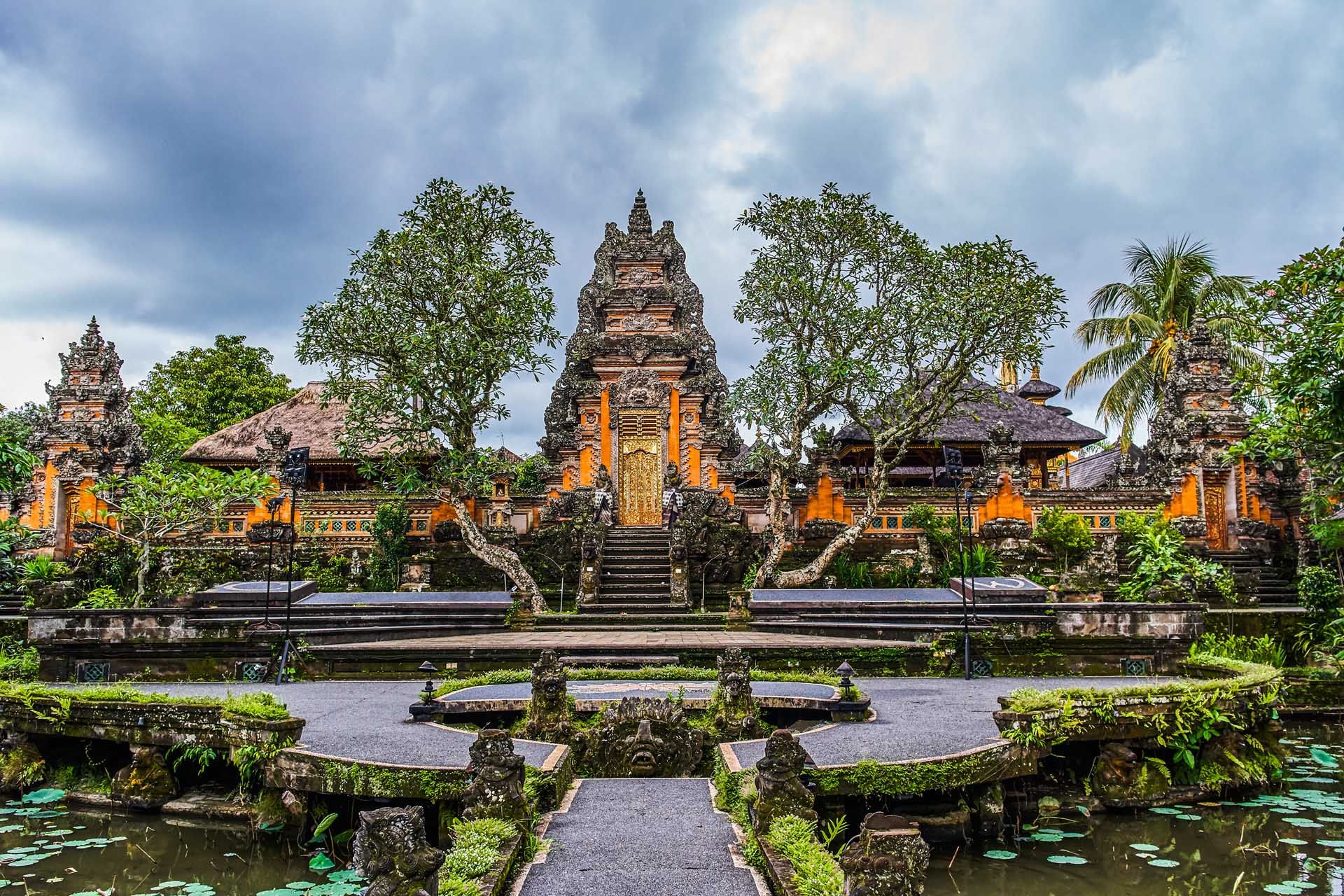13. Gunung Kawi Temple, Ubud
Gunung Kawi Temple, located in the lush landscapes of Bali, is a captivating masterpiece that carries with it a rich history and a spiritual essence. Nestled amidst the emerald green rice terraces and surrounded by towering cliffs, this ancient temple stands as a testament to the island's profound cultural heritage.
Carved into the rock face, the temple features impressive stone shrines that pay homage to Bali's kings and queens of the past. As one explores the temple complex, they are transported back in time, awestruck by the intricate details of the carvings and the aura of tranquility that envelops the surroundings. The lush gardens and babbling streams add to the serenity of the place, making Gunung Kawi Temple a true sanctuary for the soul.
Make sure to read our article about the best areas to stay in Bali.
14. Maduwe Karang Temple, Kubutambahan
Given that it is probably the most arresting temple in north Bali, Pura Meduwe Karang is surprisingly little visited. It lies 7km east of Singaraja’s Penarukan terminal and is dedicated to Batara Meduwe Karang – the temple ensures divine protection for crops grown on dry land, such as coconuts, maize and groundnuts.
It’s certainly built on a grand scale: the terraces at the front support 34 figures from the Ramayana, including the giant Kumbakarna battling with hordes of monkeys from Sugriwa’s army.
Yet what the temple is best known for are the carvings of Balinese villagers, including elderly people and mothers with babies. In the inner courtyard, and typical of northern temples, a large rectangular base links the three central shrines, called the bebaturan.
It is here, on the outer left wall, that you’ll find one of the most famous reliefs on Bali: a rather psychedelic cyclist in floral shorts on a bike with a flowerhead wheel. He’s sometimes named W.O.J. Nieuwenkamp, a Dutch artist who explored Bali by bicycle in 1904.
Find more accommodation options to stay in Kubutambahan.












